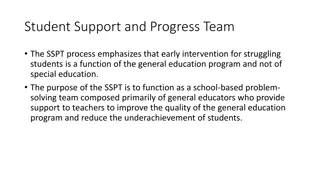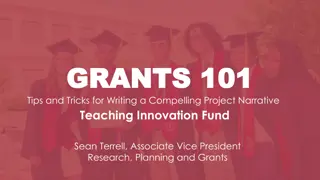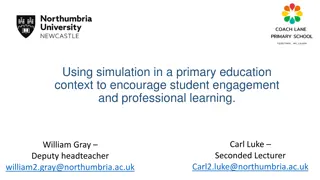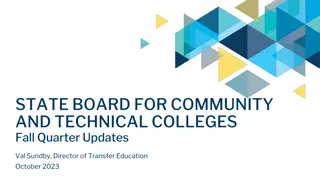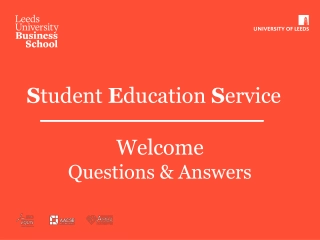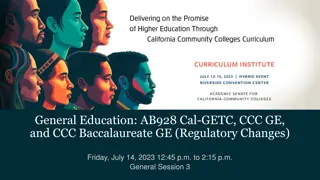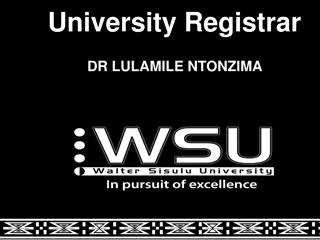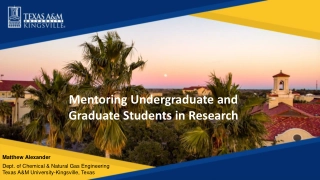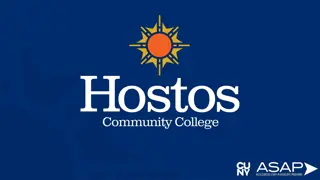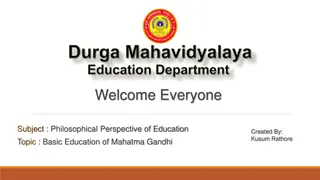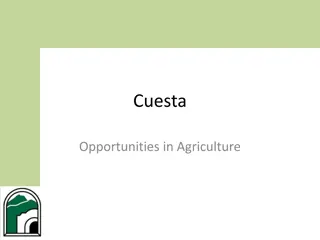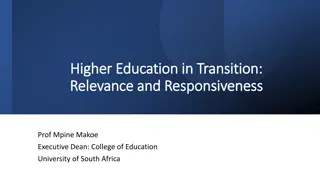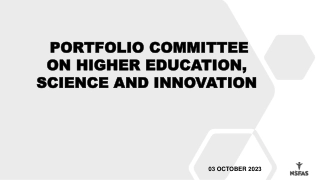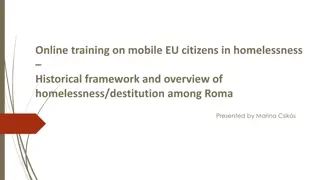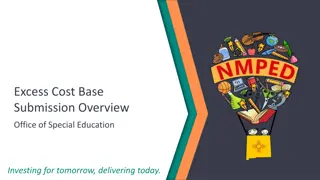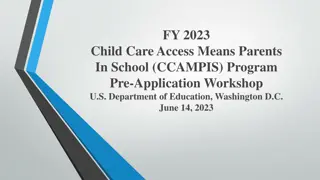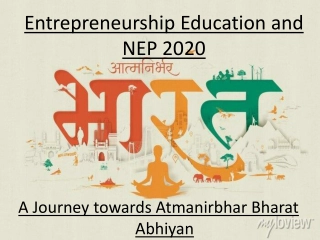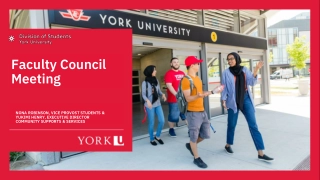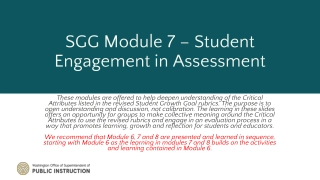Challenges and Opportunities of AI in Education: A Student Perspective
Exploring the impact of AI in higher education, this content delves into the capabilities of LLMs, tasks ChatGPT/AI excels in, and main AI-related issues faced in teaching and learning. Insights from undergraduates' perceptions and expectations on AI in education are also highlighted.
Download Presentation
Please find below an Image/Link to download the presentation.
The content on the website is provided AS IS for your information and personal use only. It may not be sold, licensed, or shared on other websites without obtaining consent from the author. Download presentation by click this link. If you encounter any issues during the download, it is possible that the publisher has removed the file from their server.
Presentation Transcript
It is easyand dangerousto overestimate the capabilities of LLMs. It is also easy and dangerous to underestimate the capabilities of LLMs Ultimately, I believe that the most useful attitude toward generative AI is to heed the lessons of comparative advantage that Ricardo (1817) taught us more than two centuries ago: Generative AI systems increasingly have comparative advantage in generating content; humans have comparative advantage in evaluating and discriminating content (at least for now), as well as in organizing research projects.
What relevant tasks does ChatGPT/AI currently do well? Feedback on paper drafts Providing Counterarguments Improving writing Synthesising text from bulletpoints Editing text Evaluating Text (lack of clarity, passive voice, structure etc) -> feedback Acting as a tutor for concepts Brainstorming ideas and examples related to a theme -> lead to homogeneity? Drafting assessments that do or do not make use of ChatGPT/AI Drafting assessments that maintain integrity Initial drafts for teaching plans/lectures
From: Michel-Villareal et al (2023) `Challenges and Opportunities of AI in HE in Education Sciences
What does ChatGPT say are the main AI-related issues facing T&L in HE? Issue Notes Academic Integrity and Plagiarism - Critical Thinking and Learning Process - Educational Equity - Adapting teaching methods and assessments - Content reliability and misinformation - Ethical and privacy concerns Use of student data, surveillance, AI decision- making and bias Skills development and job preparation shift of curriculum towards emotional intelligence creativity and ethical judgement.
Poll of 1250 undergraduates in Nov 23. Used for help with assessment 53% Used for writing in assessment 13% (5% without editing) Do not know how badly it hallucinates 35% Digital divide across income and other characteristics Find it acceptable for learning concepts 66% Institutions have changed assessment 9% Satisfied with AI support 22% Expect to use AI after university 73%
Based on these findings, we recommend: 1) Institutions should develop clear policies on what AI use is acceptable and what is unacceptable. 2) Where AI has benefits, institutions should teach students how to use it effectively and how to check whether the content it produces is of high quality.
The broader picture 1. Sector responses e.g. RG. Similar concerns but also include exploitation in production of the tools/training. Also include collaboration as a key response. https://russellgroup.ac.uk/media/6137/rg_ai_principles-final.pdf 2. Institutional responses. Student guidance starting to emerge: https://www.ole.bris.ac.uk/bbcswebdav/courses/Study_Skills/using-ai-at-university/index.html 3. Journal guidance for authors: Declaration of generative AI in scientific writing https://www.sciencedirect.com/journal/international-review-of-economics-education/publish/guide-for- authors
You How can assessments be designed to avoid the problems posed by chatgpt? ChatGPT Designing assessments to avoid the problems posed by AI tools like ChatGPT involves creating assignments and tests that emphasize critical thinking, creativity, application of knowledge, and understanding, rather than rote memorization or straightforward question-and-answer formats. Here are several strategies educators can use:
1. Open-Ended Questions: Focus on open-ended questions that require students to apply concepts to new situations, analyze case studies, or evaluate scenarios using economic principles. These questions encourage students to demonstrate their understanding and ability to apply knowledge in a nuanced way. 2. Critical Analysis and Essays: Assign essays that require critical analysis, synthesis of information from multiple sources, and original argumentation. Prompt students to critique economic models, policies, or theories, providing evidence for their viewpoints and considering counterarguments. 3. Project-Based Assessments: Design assessments around projects that require in-depth research, analysis, and presentation. Projects can be individual or group-based and might involve case studies, economic modeling, policy analysis, or empirical research using statistical software. This approach encourages practical application of skills and collaboration. 4. Oral Examinations or Presentations: Incorporate oral exams or presentations into the assessment strategy. This allows educators to assess students' understanding and ability to articulate economic concepts, theories, and their implications in real time, making it more difficult for AI to be used in preparation. 5. In-Class Assessments: Conduct in-class assessments (either written or computer-based) where internet access is restricted or monitored. This can help ensure that students are not using AI tools like ChatGPT during the assessment. 6. Application of Data Analysis: For courses that involve quantitative analysis, design assessments that require students to collect, analyze, and interpret data using statistical software. This not only tests their ability to apply economic theories but also their proficiency in using tools relevant to economic analysis. 7. Reflective Journals: Encourage students to keep a reflective journal throughout the course, in which they reflect on what they have learned, questions they have, and how they can apply economic concepts to real-world problems. This promotes continuous engagement and personal reflection, which are difficult to replicate using AI. 8. Peer Review and Collaborative Work: Utilize peer review processes for assignments, where students critique and provide feedback on each other's work. This can enhance critical thinking and expose students to diverse perspectives. Collaborative work also promotes the development of communication and teamwork skills. 9. Authentic Assessments: Create assessments that mirror real-world tasks economists or professionals in related fields might perform, such as developing a policy proposal, conducting a cost-benefit analysis, or preparing a report for a non-specialist audience. These tasks require a deep understanding of economic principles and the ability to communicate them effectively.
You How could chatgpt be incorporated into assessments while retaining integrity ChatGPT Incorporating ChatGPT into assessments while retaining academic integrity involves using the AI tool to enhance the learning experience and assess higher-order thinking skills rather than just factual recall. To maintain integrity, it's crucial to clearly communicate expectations to students about how ChatGPT can be used in assessments, including guidelines on citation and acknowledging the assistance received from AI. Additionally, incorporating a component of the assessment that requires personal reflection, explanation of the thought process, or in-person discussion can help ensure that students genuinely understand the material and have engaged deeply with the assignment. This approach not only retains academic integrity but also leverages ChatGPT to foster a richer, more interactive learning environment. Here are several strategies for effectively integrating ChatGPT into assessments:
1. As a Research Tool: Allow students to use ChatGPT as a research tool to gather information on a topic, similar to how they might use traditional search engines. The assessment can then focus on their ability to critically evaluate, synthesize, and cite the information they find, demonstrating their research skills and understanding of the subject. 2. Problem-Solving Assistant: In assessments focused on problem-solving, students can use ChatGPT to brainstorm ideas or get hints. The key is to assess the students' process of arriving at a solution, their decision-making, and their ability to justify their choices, rather than just the final answer. 3. Peer Review and Feedback: ChatGPT can be used to generate initial feedback on student drafts or work, which students then review and critique. This can help them develop their ability to evaluate and improve their own work and that of others, fostering a deeper understanding of the assessment criteria. 4. Creating Scenarios or Data Sets: For subjects like economics, ChatGPT can generate hypothetical scenarios, data sets, or case studies that students must analyze. This approach tests their ability to apply theoretical knowledge to new situations, enhancing the authenticity and applicability of the assessment. 5. Enhancing Creative Assignments: In tasks requiring creativity, such as designing a marketing campaign or writing a policy proposal, ChatGPT could be used for brainstorming sessions. Students could then be assessed on their ability to refine these ideas, implement them in a coherent plan, and critically evaluate their feasibility and impact. 6. Role-Playing and Simulations: Use ChatGPT to simulate conversations or negotiations in role-playing exercises. For instance, in a course on international relations, ChatGPT could simulate the position of a country in a negotiation exercise. Students would be assessed on their negotiation skills, strategy development, and ability to understand and respond to complex international dynamics. 7. Ethical and Reflective Exercises: Encourage students to use ChatGPT to explore different perspectives on ethical dilemmas or current events. Assessments could then focus on the students' ability to articulate their own stance, critically analyze different viewpoints, and engage in reflective thinking. 8. Technical Skill Development: In disciplines requiring technical skills, such as coding, ChatGPT can be used to provide hints or debugging assistance. Assessments can focus on the students' ability to code efficiently, understand the logic behind their code, and solve complex problems
Environmental Economics Assessment by ChatGPT 4 The government is considering implementing a new policy to reduce carbon emissions that could significantly impact various sectors of the economy. There are debates about the best approach to achieve environmental sustainability without hindering economic growth. Proposals include carbon taxing, cap-and-trade systems, and investment in renewable energy technologies. Using ChatGPT, research the economic impacts of the following environmental policies: Carbon Tax Cap-and-Trade System Investment in Renewable Energy Research Phase: Ask ChatGPT to provide information on the three proposed environmental policies, focusing on their economic implications, effectiveness in reducing carbon emissions, and potential impacts on different sectors of the economy. Take notes on the strengths and weaknesses of each approach, including any relevant data or case studies provided by ChatGPT. Critical Analysis: Write a critical analysis of each policy, incorporating: A summary of the policy and its economic implications. Discussion of the policy's effectiveness in environmental protection and its feasibility in economic terms. An evaluation of potential challenges and benefits, referencing the information obtained from ChatGPT. Policy Proposal: Based on your research and analysis, propose your own environmental policy (or a combination of the above) that would effectively reduce carbon emissions while minimizing negative economic impacts. Justify your proposal by: Explaining why your chosen policy (or policies) is the best option. Discussing how it balances environmental sustainability with economic growth. Outlining a plan for implementation, including any adjustments or considerations needed to address potential drawbacks. Reflection: Reflect on the process of using ChatGPT for your research. Discuss the advantages and limitations of using AI for gathering information on economic policies and how it influenced your analysis and decision-making. Your submission should include the research notes from ChatGPT, your critical analysis, policy proposal, and reflection. Ensure your analysis critically engages with the information provided by ChatGPT, demonstrating your ability to synthesize information and apply economic principles to environmental issues.
Can you write a short haiku poem about economics assessment in the age of chatgpt? ChatGPT Questions dance in code, Wisdom tested beyond books, Insight blooms in bytes.



